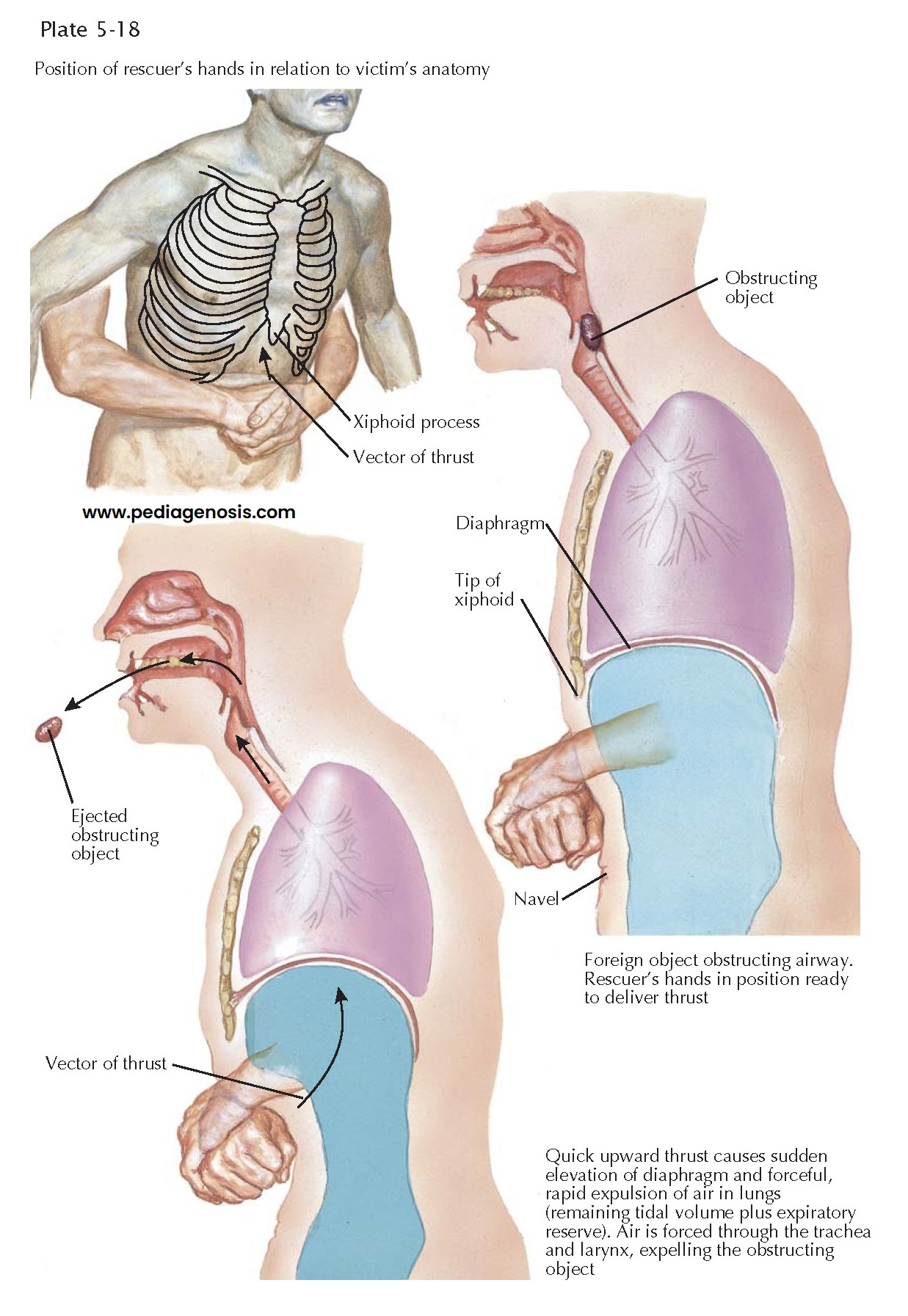UPPER AIRWAY
OBSTRUCTION AND THE HEIMLICH MANEUVER
“How many persons have perished, perhaps in an instant, and in the midst of a hearty laugh, the recital of an amusing anecdote, or the utterance of a funny joke, from the interception at the glottis of a piece of meat, a crumb of bread, a morsel of cheese, or a bit of potato, without suspicion on the part of those around of the real nature of the case!”
Although Gross wrote this comment in 1854, more than
100 years passed before Haugen, in 1963, used the term café coronary to
describe sudden death—usually occurring in a restaurant—from food asphyxiation.
Haugen and others advised that airway obstruction should immediately be
suspected whenever an individual suddenly loses consciousness while dining and
that, if death follows, one should question a diagnosis of “coronary” or
“natural” causes.
In 1974, Heimlich first reported the results of animal
studies on a new technique he proposed to relieve a completely obstructed
airway. Over the next 2 years, Heimlich received reports of clinical
experiences with the technique, documenting approximately 500 instances of
successful resuscitative efforts, including 11 cases of self-resuscitation. His
technique is now known as the Heimlich maneuver. Heimlich’s work redirected
attention to this important problem of food choking and foreign-body airway
obstruction, including the need for immediate action.
The Heimlich maneuver is a technique whereby sub-
diaphragmatic compression creates an expulsive force from the lungs that is
able to eject an obstructing object from the airway.
The anatomic basis for the Heimlich maneuver was
established by observing that when a patient is in the lateral position during
thoracotomy, pressure applied by the surgeon’s fist upward into the abdomen
below the rib cage causes the diaphragm to rise several inches into the pleural
cavity. After studying airflow rates and pressures in conscious, healthy, adult
volunteers, Heim- lich concluded that the maneuver produced an average airflow
of 205 L/min and pressure of 31 mm Hg, expel- ling an average of 945 mL of air
in approximately 0.25 second. The projectile force thus generated propels
nearly any obstruction from the airway.
Notably, chest thrusts and back slaps should not be
used, as was once advocated. Chest thrusts produce less expelling force than
the Heimlich maneuver, and back slaps may actually force an obstructing object
deeper into the lungs.
To perform the Heimlich maneuver on an adult who is
standing, the rescuer stands directly behind the victim.
1.
The rescuer
puts one arm around the victim’s waist and makes a closed fist, positioning the
thumb side of his or her fist just above the victim’s navel and well below
the tip of the xiphoid process.
2.
The rescuer
encircles the victim’s waist with his or her free arm and clasps his or her closed fist.
3.
The rescuer
gives a single, sharp, quick inward and upward compression or “thrust.”
Sometimes a series of two or more thrusts may be necessary.
The compressions almost invariably cause the food
bolus or foreign body to be ejected completely, or to “pop” out, or else propel
the object into the mouth, where it is easily reached.
The Heimlich maneuver can also be performed in an adult victim who collapses to the floor supine. The rescuer simply kneels astride or straddles the victim and provides the maneuver via sharp inward and upward thrusts of the heel of the hand, maintaining a midline position. Adults may also apply the maneuver to them-selves, either with their own fist, or by thrusting them- selves over the edge of a chair, table, or other object to duplicate a rescuer’s effort. In children, the rescuer applies the same technique using the index and middle fingers of one or both hands, depending on the child’s size, either with the child supine, or held upright in the rescuer’s lap. Infants should never be held upside down, and back blows should not be used.





